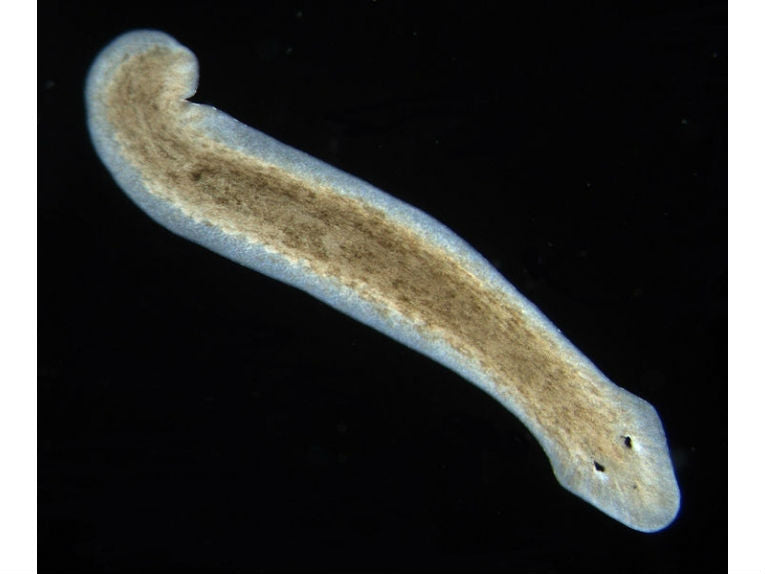The Turbellarian flatworms are cute, minute slug-like metazoans that are so primitive, they haven't got a body space (or coelom) like the rest of the animal nation. We know that some flatworms, such as Dugesia, have at least three races with different reproductive modes: asexual race, sexual race, and physiological race. Here is a Dugesia sp., with the common double eye just like a Chordate. (With these creatures, there's no reason why they shouldn't have a hundred eyes - so some do!)
In the asexual race, they reproduce by fission without sexual organs. In the sexual race, flatworms have hermaphroditic sexual organs, and copulate and then lay cocoons filled with several fertilized eggs. They are not likely to fission. In the physiological race, worms convert between asexual and sexual reproduction seasonally. In these planarians, the asexual race can switch from asexual to sexual reproduction by being fed with sexually mature worms of the same, as well as different, species. It is supposed that there is a non-species-specific substance involved here. In one experiment, the clone of Dugesia ryukyuensis used was one of the Japanese species established in Hirosaki University in 1986, and they were fed Bdellocephala, a totally sexual species in order to make them into "acquired sexuals."
Below are the results, presented as five stages of sexualisation.

Credit © Kazuya Kobayashi and Motonori Hoshi, Frontiers in Zoology
In the recent experiment by Kazuya Kobayashi and Motonori Hoshi, the sexual flatworm was homogenised, separated into precipitate and cytosolic fractions. A hydrophilic ("water-loving") fraction was also recovered from the cytosolic fraction by chromatography and found to be enzyme resistant (to papain, a protease) and low molecular weight (< 500). The research was fairly straightforward, except that the presence of a hydrophobic (water-resistant) sexual induction enhancer with a very high molecular weight in the precipitate was suggested.
The conclusions of the experimenters are that by additive or synergistic (complementary) effect, flatworms are using two substances to induce their sexual form. The relevance of sex-change in these simplest of animals is that such changes occur in most phyla, including our own (Chordates). How important these substances are needs to be determined, as very little work has still been performed in this area. Whether the substances are unique to Turbellarian flatworms will be one of the most interesting questions. The relevance to human hormones and perhaps even their evolution through the Chordates would be an even more pressing subject on the agenda.










